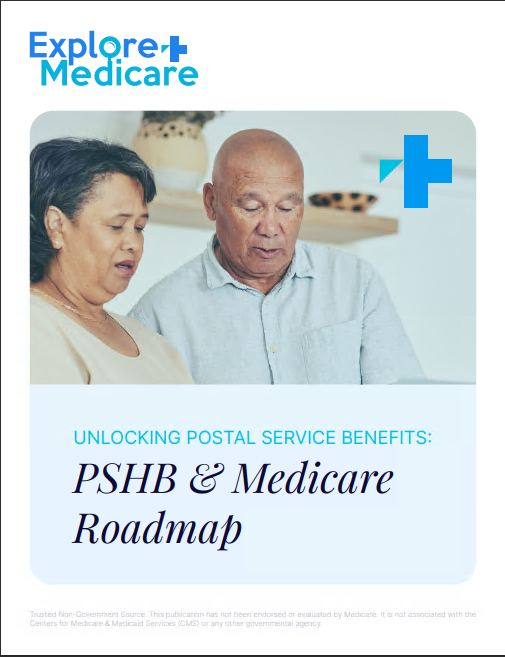Key Takeaways
-
Medicare eligibility in 2025 depends on more than just age; factors like work history, disability status, income, and residency also influence your qualifications.
-
Understanding the different paths to qualify for Parts A, B, C, and D can help you avoid coverage gaps or unexpected costs.
Understanding the Basic Age Requirement
In 2025, the standard Medicare eligibility age remains 65. If you turn 65 in 2025 and have worked at least 10 years (40 quarters) in Medicare-covered employment, you’re typically eligible for premium-free Part A. You can sign up starting three months before your 65th birthday, including the month of your birthday and the three months after. This seven-month Initial Enrollment Period (IEP) is critical for timely enrollment.
Work History and Eligibility for Premium-Free Part A
Most people qualify for premium-free Part A based on their own or a spouse’s work history. If you or your spouse paid Medicare taxes for 40 quarters, you won’t have to pay a monthly premium for Part A. However:
-
If you worked 30-39 quarters, you may qualify for Part A with a reduced monthly premium.
-
If you worked fewer than 30 quarters, you’ll likely have to pay the full premium.
This rule also applies to divorced or widowed spouses, as long as the marriage lasted at least 10 years.
Part B: Who Needs to Enroll and When
Unlike Part A, Part B (which covers outpatient care, doctor visits, and preventive services) always requires a monthly premium. Most people become eligible for Part B at the same time as Part A. If you delay Part B enrollment without having other creditable coverage, you could face a permanent late enrollment penalty.
You can sign up during:
-
Your Initial Enrollment Period
-
A Special Enrollment Period (SEP) if you are still working and covered by an employer group health plan
-
The General Enrollment Period (GEP) from January 1 to March 31 if you missed your IEP or SEP. Coverage then begins July 1.
Early Access Due to Disability or Medical Conditions
You don’t have to wait until 65 if you qualify due to a disability. In 2025, individuals under age 65 may be eligible for Medicare if:
-
They’ve received Social Security Disability Insurance (SSDI) for at least 24 months.
-
They have End-Stage Renal Disease (ESRD) and require dialysis or a kidney transplant.
-
They have Amyotrophic Lateral Sclerosis (ALS), in which case Medicare begins the first month SSDI starts.
These rules allow access to Medicare earlier than the standard age and come with different enrollment timelines.
Citizenship and Residency Status Requirements
Medicare isn’t just about age and work history—you must also meet specific residency criteria. You’re eligible if you are:
-
A U.S. citizen
-
A permanent legal resident who has lived in the U.S. continuously for at least five years
Even if you meet the age and work requirements, failing to meet the residency standard disqualifies you from enrollment.
Medicare Advantage and Prescription Drug Coverage Eligibility
In 2025, Medicare Advantage (Part C) and Prescription Drug Plans (Part D) follow the same core eligibility rules as Original Medicare. To enroll:
-
You must have both Part A and Part B to join a Medicare Advantage plan.
-
You must have either Part A and/or Part B to enroll in a standalone Part D plan.
-
You must live in the plan’s service area.
You also need to enroll during one of the official enrollment periods:
-
Initial Enrollment Period (IEP)
-
Annual Enrollment Period (AEP) from October 15 to December 7
-
Medicare Advantage Open Enrollment Period from January 1 to March 31 (for those already in an MA plan)
Income-Related Rules That May Affect Eligibility and Costs
Your income doesn’t affect whether you qualify for Medicare—but it can affect how much you pay, especially for Part B and Part D. In 2025, high-income beneficiaries pay more due to Income-Related Monthly Adjustment Amounts (IRMAA).
The IRMAA applies if your modified adjusted gross income (MAGI) from two years ago (2023) is over $106,000 for individuals or $212,000 for couples filing jointly. If so, you’ll pay a higher monthly premium for both Part B and Part D.
There are also programs that help lower-income individuals with premiums and out-of-pocket costs, such as:
-
Medicare Savings Programs
-
Extra Help (for Part D)
These programs have strict income and asset limits and require a separate application.
What Happens If You Miss Your Enrollment Window
Missing your Medicare enrollment period can lead to late penalties or gaps in coverage. Here’s what to know:
-
Part A: Most people won’t face a penalty if eligible for premium-free Part A. But if you have to pay for it and delay enrollment, the premium may increase by 10% for twice the number of years you delayed.
-
Part B: The penalty is 10% for each full 12-month period you were eligible but didn’t enroll. This penalty lasts for as long as you have Part B.
-
Part D: The late enrollment penalty is 1% of the national base premium times the number of full, uncovered months you went without creditable prescription drug coverage.
The General Enrollment Period (January 1 – March 31) is your next chance to enroll if you miss your IEP or SEP.
Special Enrollment Circumstances
Certain life changes allow you to enroll in or change Medicare plans outside of standard enrollment periods. These include:
-
Losing employer coverage
-
Moving out of your plan’s service area
-
Being released from incarceration
-
Becoming eligible for Medicaid or Extra Help
Each situation triggers a Special Enrollment Period (SEP) with different timelines. Typically, SEPs last 2 to 3 months following the event.
Coordination with Other Coverage
If you have other health insurance—like employer coverage, TRICARE, or VA benefits—your Medicare eligibility may still apply, but the timing and order in which you enroll matter.
In general:
-
Medicare becomes primary coverage once you retire or lose employer coverage.
-
Active workers with employer insurance can delay Part B without penalty if the employer has 20+ employees.
-
TRICARE beneficiaries must have Part B to keep their TRICARE benefits past age 65.
Carefully reviewing your other coverage and how it works with Medicare is crucial to avoid overlaps or gaps.
Recent Changes Affecting Eligibility and Access
In 2025, several key updates have taken effect that shape Medicare access:
-
The coverage gap in Part D (donut hole) has been eliminated, capping out-of-pocket costs for prescriptions at $2,000 annually.
-
The Special Enrollment Period for Medicare Part B related to PSHB (Postal Service Health Benefits) ran from April through September 2024 for certain Postal retirees.
-
Updated IRMAA income thresholds have shifted slightly due to inflation, affecting how high-income beneficiaries are assessed.
These updates reflect ongoing policy changes and should be factored into your eligibility planning.
How to Prepare for Your Medicare Eligibility Milestone
To avoid any surprises as you approach eligibility, follow this checklist:
-
Confirm your work history and tax records to see if you qualify for premium-free Part A.
-
Review your current health coverage and whether it allows you to delay Part B.
-
Mark your calendar for your Initial Enrollment Period.
-
Monitor your income and assets if you anticipate applying for assistance programs.
-
Stay informed about enrollment periods and recent policy updates.
Taking these steps ahead of time helps ensure you enter Medicare fully covered, without penalties or delays.
Understanding Medicare Eligibility Helps You Make Better Decisions
Medicare eligibility in 2025 isn’t as cut-and-dry as it might seem. Age is just the starting point—your work history, income level, medical status, and current insurance all factor into when and how you qualify.
Planning ahead and knowing the rules can help you avoid costly mistakes. If you’re unsure where you stand, speak with a licensed agent listed on this website to get professional advice tailored to your situation.









